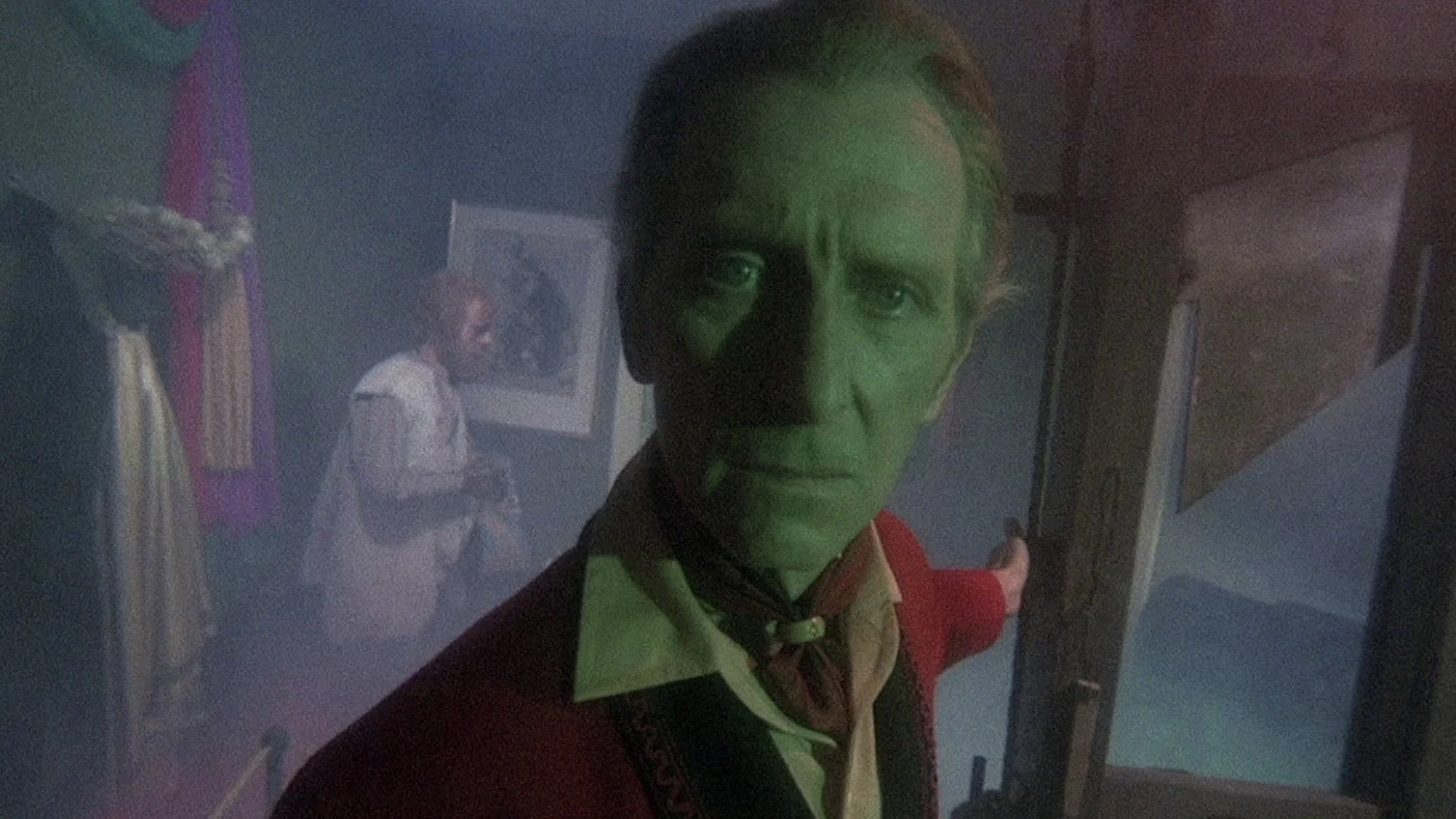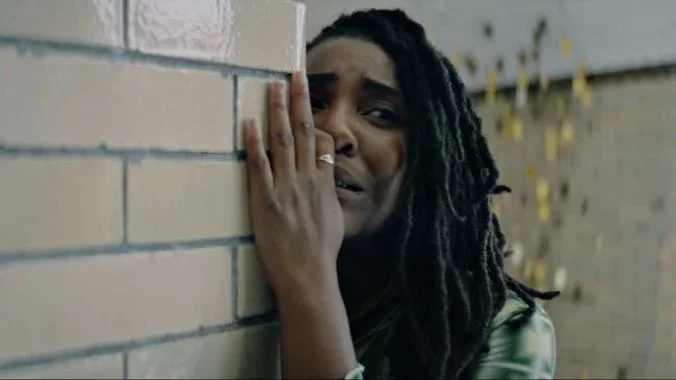Danse Macabre #18: Film Review — "Someone's Watching Me" (1978)
In 1981, Stephen King published Danse Macabre, a work of non-fiction wherein the author acts as a tour guide through the history of horror. He addresses the social issues and political conflicts that have influenced creators over the years, and the ways creators have influenced each other.
King closes out the volume by recommending 96 films and 113 books released during the 1950-1980 period that he feels have significantly contributed to modern genre fiction. With this Fearsome Queer column, I’ll be making my way through those titles in no particular order.
The first and last question that crosses my mind when I watch a Danse Macabre film is, “Why did Stephen King feel the need to include this?” Sometimes, the answer is obvious. Movies like Invasion of the Body Snatchers and The Abominable Dr. Phibes wear their merits on their sleeve and have stood the test of time. For other films, it’s not always so clear. I’ve been able to parse out reasons for why under-seen gems such as I Bury the Living and X: The Man with the X-Ray Eyes made the cut. But this entry has me in a pretty precarious position…
Because, honestly, what the hell is Someone’s Watching Me doing on this list?
To be clear, it’s by no means a bad movie—it’s just unremarkable.
Someone’s Watching Me is a made-for-TV thriller directed by John Carpenter. By this point in his career, he’d made Dark Star and Assault on Precinct 13. A few weeks after Carpenter wrapped Someone’s Watching Me, he entered production on Halloween. Then, his theatrical follow-up to that stone-cold classic would be The Fog, which I’m also quite fond of.
I mention these other four films not only to provide historical context, but because King mentions them in the book (in other words, he’d seen them), yet the ones he chose to list in Appendix I are Halloween (of course) and… Someone’s Watching Me. I’m curious why this pair. Why not Halloween and The Fog? Or Halloween and Assault on Precinct 13?
Like I said before, Someone’s Watching Me is not a total waste of time—it’s entertaining and well made—but does anyone really need to seek it out, aside from John Carpenter completists? I’m not so sure.
It’s seldom ever been more apparent, given the vibe of Someone’s Watching Me, that Carpenter is a part of the generation of directors who grew up seeing the films of Alfred Hitchcock on the big screen and/or watching episodes of Alfred Hitchcock Presents at home on a TV screen. The plot alone is reminiscent of Hitch: a gorgeous woman in a lavish high-rise apartment gets pulled into a perilous cat-and-mouse game with the predatory voyeur who’s surveilling and spying on her from the building across the street.
The watched woman is Leigh, played by Lauren Hutton, perhaps best known for playing the sultry vampire countess in Once Bitten, the mid-80s teen sex comedy starring a baby Jim Carrey. Leigh is a director of live television and a recent LA transplant, and this is the welcome she receives! Hutton’s performance here matches the movie in that it’s serviceable but not much more, which is actually okay because the role doesn’t demand a lot from Hutton to begin with, other than (I’m sorry to say) being attractive.
If the movie has anything to say it’s in regards to the entitled nature of lascivious men in a patriarchal world. Leigh isn’t safe at home and she can’t let her guard down at work, either. The relentless advances from the men at the TV station where she works are truly a sign of the times. I’m not saying that shitty male behavior has been eradicated, but I’d imagine that such brazen come-ons aren’t uttered in workplaces nearly as often these days. If anything, it’s not normalized anymore. So, while Leigh’s almost-blasé acceptance of it is dismaying, I recognize that, as a (good-looking) career woman in a male-dominated field, she doesn’t have much choice but to grin and bear it if she wants to succeed, and that sucks.
One of the few people not chasing after Leigh is Sophie, her lesbian co-director at the station. Adrienne Barbeau, fresh from playing Bea Arthur’s daughter for all six seasons of Maude, plays Sophie openly and without airs, lending the character one of her signature flavors of candor. The film is pretty upfront with Sophie’s sexual orientation, actually. There’s no need for undertones or a queer reading; it’s right there in the text. Sophie literally comes out to Leigh on Leigh’s first day, then quickly assures her that she’s not her type. I’m sure she’s not lying about that, but I have to wonder if another reason why Sophie doesn’t pursue Leigh is because it’s men who are threatening in this landscape.
Carpenter recruited Phil Barber to art-direct, and a glance at Barber’s resume reveals how he got the gig. He was an art director for The Twilight Zone. Hell, that’s all I’d need to hire him. So, even though Someone’s Watching Me does not call for inventive or extravagant sets, the sets do subtly inform the story. Anytime the calming beiges and creams of Leigh’s apartment get disrupted, danger is afoot. Whenever we’re subjected to the bilious greenish-blue tints of the police department, bullshit is near. My favorite bit of art direction, though, is the apartment building visible outside Leigh’s window, where her stalker monitors her from. During the day, the view is unexceptional—just a building—but at night, when the units are lit, they form little boxes of activity reminiscent of the tiny screens in Leigh’s control room at the station. The twisted irony here is that the place where Leigh is least in control is in her own home.
John Carpenter knew what he was doing when he made Someone’s Watching Me. You can tell because the editing isn’t littered with extraneous coverage. This tells me that a.) he planned out the shots he needed, b.) he knew how to achieve the shots he needed, and c.) he purposefully didn’t shoot anything beyond the shots he needed. This sort of direction shows confidence and an unwillingness to let network bigwigs re-cut his work before air. It’s an old Hitchcock trick. If you simply don’t give the studio the footage, they can’t fuck up your vision with it. It ought not be a surprise to anyone to read that John Carpenter is a highly adept filmmaker. After all, he’s one of the best to ever do it.
So, when I ask, “What the hell is Someone’s Watching Me doing on this list?”, I’m not accusing it of being a piece of shit. Not at all. I’m just saying that even in 1981, when Danse Macabre was published, there were already better, more lasting examples of John Carpenter’s prowess in existence. Now, I wouldn’t steer anyone away from Someone’s Watching Me, but I honestly wouldn’t recommend it to anyone other than Carpenter completists—it’s a deep cut, but not a hidden gem. To put it another way, it’s a perfectly suitable movie, but “suitable” movies have no business being on this list.


